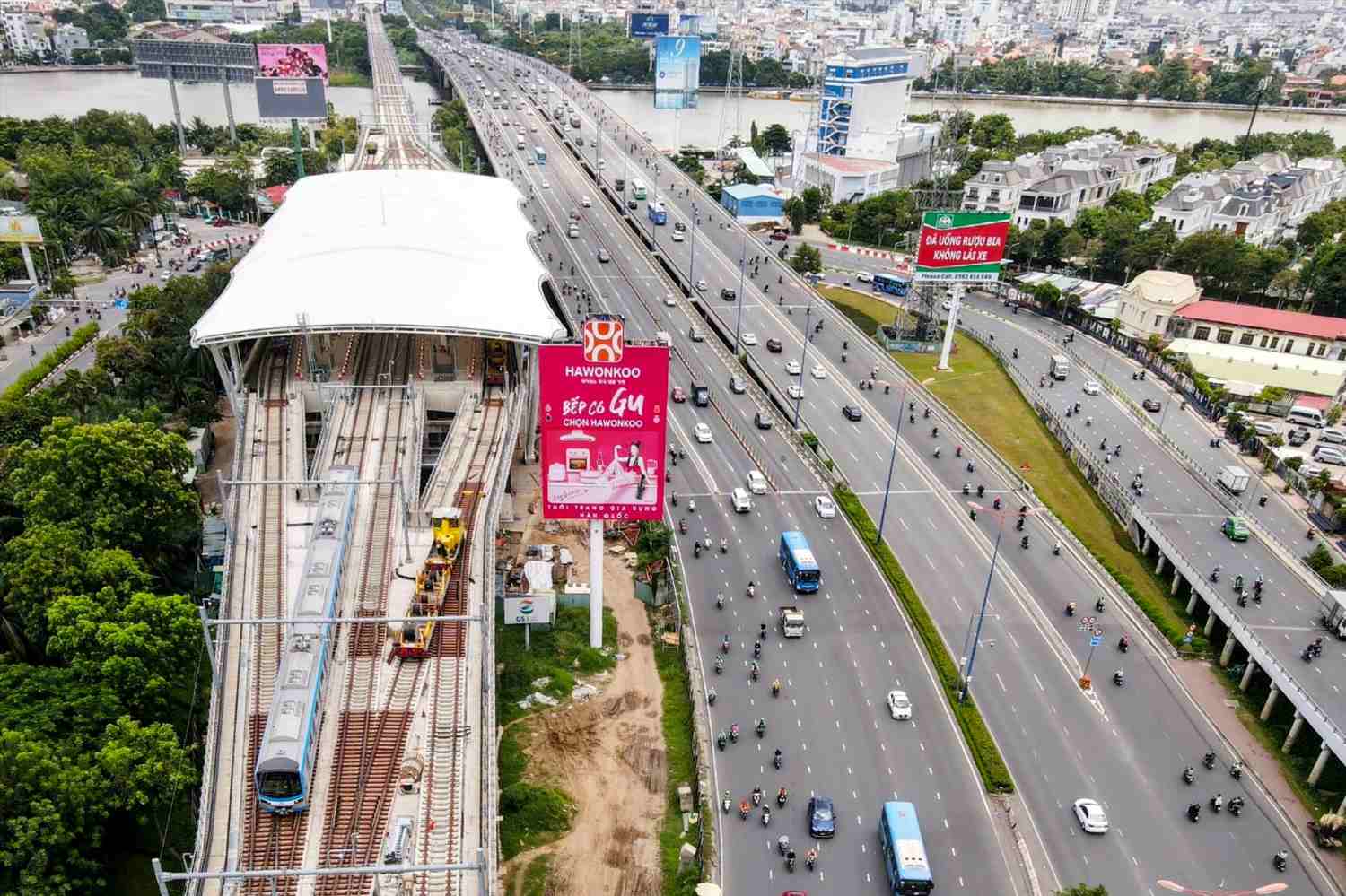Recently, the Government has submitted to the National Assembly a draft Resolution on specific mechanisms and policies for the development of urban railways in Hanoi and Ho Chi Minh City.
In the submission, the Government proposed 6 groups of mechanisms including: Mobilizing capital sources; investment procedures; developing urban areas according to the TOD model (urban areas associated with public transport); developing railway industry, technology transfer and human resource training; construction materials policy; regulations specifically for Ho Chi Minh City.
The reason for the 6th group of mechanisms specifically for Ho Chi Minh City is because the Capital Law issued in 2024 has removed institutional problems for Hanoi.
For some specific mechanisms for Ho Chi Minh City such as in the TOD area, the Ho Chi Minh City People's Committee is allowed to collect and use 100% of the revenue from exploiting the added value of land.
Ho Chi Minh City is allowed to borrow through issuing local government bonds, borrowing from domestic financial institutions, or re-borrowing from the Government...
According to calculations, the total investment capital to build 7 metro lines in the period of 2025 - 2035 is up to 40.21 billion USD.
According to the roadmap, after the National Assembly issued a resolution, in 2025, Ho Chi Minh City will prepare a pre-feasibility study report to approve the investment policy for all 7 routes.
Site clearance will be carried out from 2026 - 2029. The metro lines will start construction in 2027.
When completed, the metro network can meet 40 - 50% of the public transport needs of Ho Chi Minh City people.

Architect Ngo Viet Nam Son - an urban planning expert, commented that building hundreds of kilometers of metro in a decade is a big challenge when Metro Line 1 takes 17 years to complete.
To speed up progress, the TOD model will be an important solution to help attract resources and ensure socio-economic efficiency.
According to Mr. Ngo Viet Nam Son, TOD only promotes its effectiveness when there is a synchronously connected infrastructure ecosystem, especially a wide bus network, linked to airports, seaports, railways and waterways.
If it does not do this model well, the city could have to pay millions of dollars a year to maintain the metro. On the contrary, when TOD develops in the right direction, the areas around metro stations will become a growth driver, leading to urban development.
Mr. Son gave an example of Metro Line 1, when connecting the inner city area with Ho Chi Minh City National University, Suoi Tien and Bien Hoa Tourist Area, it will help the two ends of the route attract residents, increase the demand for metro, and ensure effective exploitation.
Although Resolution 98 has paved the way for the implementation of TOD, Mr. Son emphasized that it is still necessary to adjust many legal regulations related to compensation, clearance, land auctions and planning to avoid the situation where each project has to ask for permission, prolonging the time as before.
To build a TOD ecosystem, Ho Chi Minh City needs to mobilize billions of USD to invest in infrastructure. However, this model is likely to be profitable and ensure capital recovery.
Therefore, Mr. Son said that the Central Government needs to support a part of the budget for the city to synchronously deploy many metro lines and develop TOD. At the same time, Ho Chi Minh City needs to have a clear scenario on the time of capital recovery and economic benefits, in order to attract private investment.
In addition to capital, the human resources problem is also an important factor. Mr. Ngo Viet Nam Son proposed to establish a TOD group of strategic investors with financial potential and management capacity to operate the metro system effectively.
Ho Chi Minh City also needs to prepare personnel right now to operate and maintain dozens of metro lines in the future.











